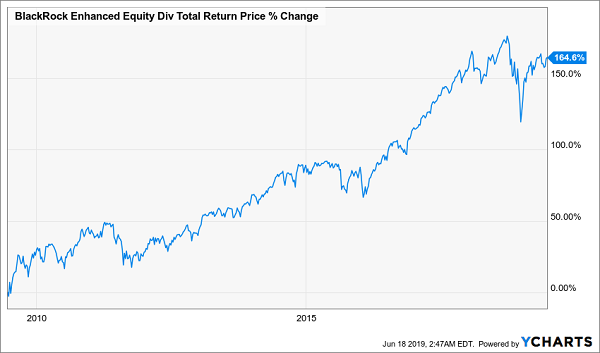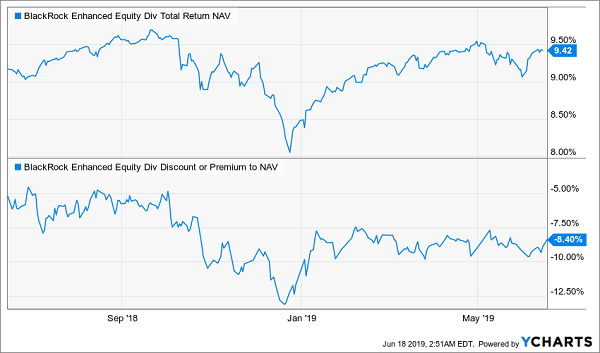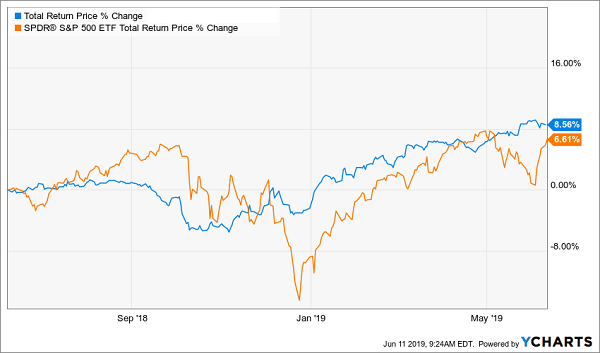Today I’m going to give you a strategy—and a strong 6.5%-yielding fund—that both shine when the market throws a tantrum.
And both are way better than what most people do when things get rough: cash in.
Many studies have shown that trying to time the market simply doesn’t work. And even if you did have the superhuman ability to get in and out perfectly, you’d still underperform a buy-and-hold approach. Thanks to compound interest, keeping skin in the game is more important than trying to save your skin.
Options: Your (Surprising) Friend When Markets Roil
Instead of fruitlessly trying to time the market, we’re going to do something that actually works (and takes far less effort!).
I’m talking about options.
Now it is completely true that buying options is akin to gambling.
But we’re not going to buy options; we’re going to sell options (call options, specifically).
And that changes the game completely.
Best of all, we’re going to sell our call options through a “covered-call fund,” a special type of closed-end fund (CEF) run by professionals who do all the work for us.
(Call options give the holder the right, but not the obligation, to buy a security before a certain date. The buyer pays the seller—in this case our fund—for this right, and that cash stream helps smooth out covered-call funds’ volatility.)
Funds that sell call options against a portfolio of stocks can do better than funds that simply buy and hold in volatile times, while also outperforming in sideways markets. Since stocks have been both volatile and sideways for the last year, this strategy is tailor-made for today.
That brings me to our pick, which both buys high-quality companies at a good price and limits its downside with options.
This Fund Defends Your Nest Egg and Yields 6.5%
Our CEF is one of the largest of its class and one of the most discounted: the BlackRock Enhanced Equity Dividend Trust (BDJ).
This is a 6.5%-yielder trading at an 8.9% discount to NAV, even though its discount was half that just a few months ago. Those two facts are important because they mean BDJ’s managers only need to get a 6% return in the stock market to maintain the fund’s dividend payout, which is easy, since the market averages an 8% annual return over the long haul.
And BDJ has done even better, with a 9.4% annualized return over the last decade.
A Sparkling History
 In fact, BDJ’s dividend has remained the same for the last four years—ever since the Fed started raising rates and volatility in stocks increased. That makes sense, considering the fund’s portfolio and strategy.
In fact, BDJ’s dividend has remained the same for the last four years—ever since the Fed started raising rates and volatility in stocks increased. That makes sense, considering the fund’s portfolio and strategy.
Large-Cap Safety Through and Through
 With a portfolio of large-cap stocks from all sectors and a focus on cash-flow generation, BDJ marries value-investing and covered-call strategies in one easy-to-buy fund.
With a portfolio of large-cap stocks from all sectors and a focus on cash-flow generation, BDJ marries value-investing and covered-call strategies in one easy-to-buy fund.
Plus, those 6.5% dividends are a nice treat.
Yet BDJ isn’t getting much respect—at least not yet. After its discount to NAV widened at the end of 2018, when investors panicked, BDJ is still cheaper than it was a year ago, even though its NAV has pretty much fully recovered:
An Underappreciated Bargain
 If volatility comes back, that NAV recovery may slow down a bit, but it should stay on the same trajectory. And if volatility disappears, expect BDJ’s discount to NAV to continue to vanish. That spells out a rare win-win for income investors looking to protect themselves while still getting a reliable income stream.
If volatility comes back, that NAV recovery may slow down a bit, but it should stay on the same trajectory. And if volatility disappears, expect BDJ’s discount to NAV to continue to vanish. That spells out a rare win-win for income investors looking to protect themselves while still getting a reliable income stream.
This 7% Dividend Is Recession-Proof—and Tax-Free, Too
Covered-call funds aren’t the only CEFs that can build some Zen into your portfolio during a market wipeout.
There’s another type of high-yield CEF that does the exact same thing. I’m talking about municipal-bond funds.
I know. Just the name is enough to make your eyes glaze over. But don’t let that put you off, because “muni” funds are perfect for any investor’s portfolio.
That’s because they’re backed by the most reliable consumer there is: the government!
States, counties and cities issue munis to fund badly needed infrastructure, such as roads, bridges, airports and railroads.
That makes them a solid source of income on their own—and you can boost your dividend stream even more if you buy your munis through a CEF, like the one I just recommended in the latest issue of my CEF Insider service.
Check out the steady upward climb my new pick has put on over the past year (in blue below), compared to the motion sickness your typical S&P 500 investor suffered:
Imagine Holding This “Steady Eddie” Fund
 And it still has plenty of room to run!
And it still has plenty of room to run!
— Michael Foster
“Headline Yield” Deceives [sponsor]
Here’s something else I love about muni-bond CEFs: their dividends are tax-free for most Americans. So even though my pick’s current yield is “only” 4.8%, its “real” yield could be north of 7% to you, depending on your tax bracket.
To get all the details on this new pick, all you have to do is click here to take a no-obligation trial to CEF Insider.
When you do, you’ll get members-only access to my latest issue, which gives you everything you need to know about this stout income play before you buy.
That’s not all.
I’ll start by showing you 5 of my other top picks from across the CEF space. Right now, these 5 buys pay a sky-high 8% average dividend! These 5 funds are all great buys if you’re looking to keep your portfolio’s volatility under control while multiplying your income stream 2X, 3X or even more.
Click here to discover these 5 funds and grab the latest CEF Insider, with full details—name, ticker symbol, buy-under price and more—on that stable 5%-paying (but really much higher) muni-bond CEF I just mentioned.
Source: Contrarian Outlook

